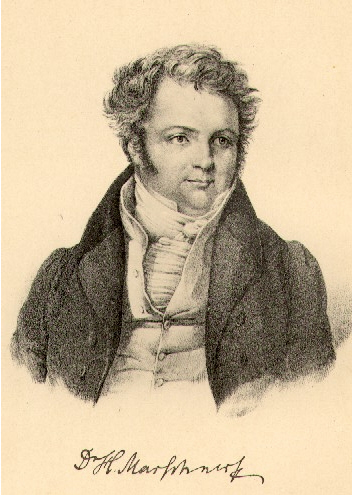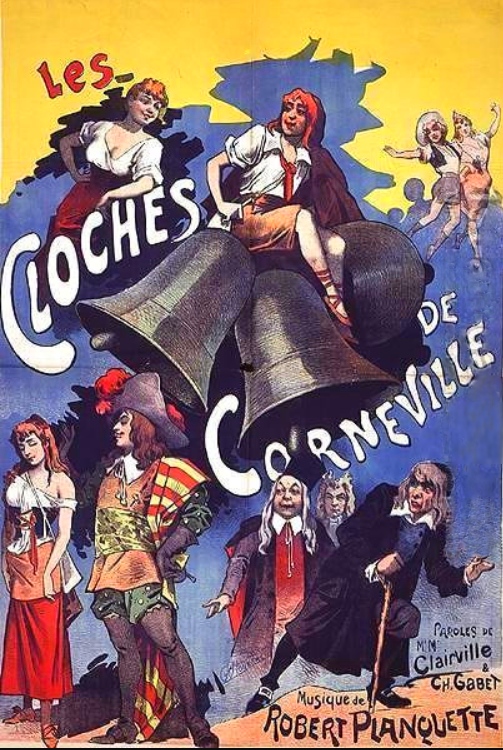|
Der Bäbu
'' Der Bäbu '' (''The Baboo'') is a Comic opera in three acts by Heinrich Marschner. The German libretto by Wilhelm August Wohlbrück (Marschner's brother-in-law) is based on the book ''The Baboo and Other Tales Descriptive of Society in India'', Smith, Elder, and Co., London 1834 by Augustus Prinsep. The first performance took place on 19 February 1838 in Hanover. Roles Instrumentation Marschner scored the opera for two piccolos and two flutes (not doubling), two oboes, two clarinets, two bassoons, four horns, three trombones, timpani, tamtam, and strings. Recordings * Overtura References Notes Sources *Allen Dean Palmer, ''Heinrich August Marschner, 1795–1861: His life and stage works''. Ann Arbor 1980 *John Warrack John Hamilton Warrack (born 1928, in London) is an English music critic, writer on music, and oboist. Warrack is the son of Scottish conductor and composer Guy Warrack. He was educated at Winchester College (1941-6) and then at the Royal College ... and E ... [...More Info...] [...Related Items...] OR: [Wikipedia] [Google] [Baidu] |
List Of Operas By Heinrich Marschner
This is a complete list of the operas of the German composer Heinrich Marschner (1795–1861). List References ;Sources *Palmer, A Dean (1992), 'Marschner, Heinrich' in ''The New Grove Dictionary of Opera'', ed. Stanley Sadie Stanley John Sadie (; 30 October 1930 – 21 March 2005) was an influential and prolific British musicologist, music critic, and editor. He was editor of the sixth edition of the '' Grove Dictionary of Music and Musicians'' (1980), which was publ ... (London) {{DEFAULTSORT:Marschner, Heinrich Lists of operas by composer Lists of compositions by composer ... [...More Info...] [...Related Items...] OR: [Wikipedia] [Google] [Baidu] |
Heinrich Marschner
Heinrich August Marschner (16 August 1795 – 14 December 1861) was the most important composer of German opera between Weber and Wagner."Marschner's ''Hans Heiling'' From Vienna" WQXR, 26 November 2015 Biography Marschner was born in and was originally intended for a legal career. After a meeting with around 1815–16, he decided to devote himself to music and became a private music teacher in[...More Info...] [...Related Items...] OR: [Wikipedia] [Google] [Baidu] |
Augustus Prinsep
Augustus Prinsep (31 March 1803 – 10 October 1830) was an English artist, writer, and civil servant. He is best known for his posthumous book, ''The Journal of a Voyage from Calcutta to Van Diemen's Land''. Life Prinsep, born in London, was the eighth and youngest son of Sophia Elizabeth Auriol (1760–1850) and John Prinsep. He was educated at Haileybury and Imperial Service College, Haileybury College. He went to India, arriving in Calcutta in July 1822. He worked as a clerk with the East India Company in Calcutta. In 1827 he was promoted to commissioner of Palamu district, Pergunnah Palamow. He married Elizabeth Acworth Ommanney in June 1828. He was diagnosed with tuberculosis, consumption and advised by his doctors to leave India. He decided to emigrate to Australia, recording his travels in his journal and letters to his wife. He reached Hobart, Van Diemen's Land (Tasmania) in September 1829 via Batavia, Dutch East Indies (Indonesia). He died at sea on a further voyage ma ... [...More Info...] [...Related Items...] OR: [Wikipedia] [Google] [Baidu] |
Staatsoper Hannover
Hanover State Opera (german: Staatsoper Hannover) is an opera company in Hanover, the state capital of Lower Saxony, Germany. The company is resident in the Hanover Opera House (), and is part of a publicly-funded umbrella performing arts organisation called Hanover State Theatre of Lower Saxony (), or simply Hanover State Theatre (). Hanover State Theatre comprises the following divisions that put on operas, stage productions, and concert programs, in addition to maintaining a theatre museum, with seasons running from September through to June. Hanover Opera House Hanover State Opera is resident in the Hanover Opera House, built in classical style between 1845 and 1852 based on a plan by Georg Ludwig Friedrich Laves. The building was rebuilt from 1948 after being badly damaged by the aerial bombings of Hanover during World War II. In 1985, the acoustics were improved, and between 1996 and 1998, the stage facilities were renovated. The International Choreographic Competitio ... [...More Info...] [...Related Items...] OR: [Wikipedia] [Google] [Baidu] |
Comic Opera
Comic opera, sometimes known as light opera, is a sung dramatic work of a light or comic nature, usually with a happy ending and often including spoken dialogue. Forms of comic opera first developed in late 17th-century Italy. By the 1730s, a new operatic genre, ''opera buffa'', emerged as an alternative to '' opera seria''. It quickly made its way to France, where it became ''opéra comique'', and eventually, in the following century, French operetta, with Jacques Offenbach as its most accomplished practitioner. The influence of the Italian and French forms spread to other parts of Europe. Many countries developed their own genres of comic opera, incorporating the Italian and French models along with their own musical traditions. Examples include German ''singspiel'', Viennese operetta, Spanish '' zarzuela'', Russian comic opera, English ballad and Savoy opera, North American operetta and musical comedy. Italian ''opera buffa'' In late 17th-century Italy, light-hearted m ... [...More Info...] [...Related Items...] OR: [Wikipedia] [Google] [Baidu] |
Hanover
Hanover (; german: Hannover ; nds, Hannober) is the capital and largest city of the German state of Lower Saxony. Its 535,932 (2021) inhabitants make it the 13th-largest city in Germany as well as the fourth-largest city in Northern Germany after Berlin, Hamburg and Bremen. Hanover's urban area comprises the towns of Garbsen, Langenhagen and Laatzen and has a population of about 791,000 (2018). The Hanover Region has approximately 1.16 million inhabitants (2019). The city lies at the confluence of the River Leine and its tributary the Ihme, in the south of the North German Plain, and is the largest city in the Hannover–Braunschweig–Göttingen–Wolfsburg Metropolitan Region. It is the fifth-largest city in the Low German dialect area after Hamburg, Dortmund, Essen and Bremen. Before it became the capital of Lower Saxony in 1946, Hannover was the capital of the Principality of Calenberg (1636–1692), the Electorate of Hanover (1692–1814), the Kingdom of Hannover ... [...More Info...] [...Related Items...] OR: [Wikipedia] [Google] [Baidu] |
Baritone
A baritone is a type of classical male singing voice whose vocal range lies between the bass and the tenor voice-types. The term originates from the Greek (), meaning "heavy sounding". Composers typically write music for this voice in the range from the second F below middle C to the F above middle C (i.e. F2–F4) in choral music, and from the second A below middle C to the A above middle C (A2 to A4) in operatic music, but the range can extend at either end. Subtypes of baritone include the baryton-Martin baritone (light baritone), lyric baritone, ''Kavalierbariton'', Verdi baritone, dramatic baritone, ''baryton-noble'' baritone, and the bass-baritone. History The first use of the term "baritone" emerged as ''baritonans'', late in the 15th century, usually in French sacred polyphonic music. At this early stage it was frequently used as the lowest of the voices (including the bass), but in 17th-century Italy the term was all-encompassing and used to describe the averag ... [...More Info...] [...Related Items...] OR: [Wikipedia] [Google] [Baidu] |
Bass (vocal Range)
A bass is a type of classical male singing voice and has the lowest vocal range of all voice types. According to ''The New Grove Dictionary of Opera'', a bass is typically classified as having a vocal range extending from around the second E below middle C to the E above middle C (i.e., E2–E4).; ''The Oxford Dictionary of Music'' gives E2–E4/F4 Its tessitura, or comfortable range, is normally defined by the outermost lines of the bass clef. Categories of bass voices vary according to national style and classification system. Italians favour subdividing basses into the ''basso cantante'' (singing bass), ''basso buffo'' ("funny" bass), or the dramatic ''basso profondo'' (low bass). The American system identifies the bass-baritone, comic bass, lyric bass, and dramatic bass. The German ''Fach'' system offers further distinctions: Spielbass (Bassbuffo), Schwerer Spielbass (Schwerer Bassbuffo), Charakterbass (Bassbariton), and Seriöser Bass. These classification systems can ... [...More Info...] [...Related Items...] OR: [Wikipedia] [Google] [Baidu] |
Soprano
A soprano () is a type of classical female singing voice and has the highest vocal range of all voice types. The soprano's vocal range (using scientific pitch notation) is from approximately middle C (C4) = 261 Hz to "high A" (A5) = 880 Hz in choral music, or to "soprano C" (C6, two octaves above middle C) = 1046 Hz or higher in operatic music. In four-part chorale style harmony, the soprano takes the highest part, which often encompasses the melody. The soprano voice type is generally divided into the coloratura, soubrette, lyric, spinto, and dramatic soprano. Etymology The word "soprano" comes from the Italian word '' sopra'' (above, over, on top of),"Soprano" '' |
Tenor
A tenor is a type of classical music, classical male singing human voice, voice whose vocal range lies between the countertenor and baritone voice types. It is the highest male chest voice type. The tenor's vocal range extends up to C5. The low extreme for tenors is widely defined to be B2, though some roles include an A2 (two As below middle C). At the highest extreme, some tenors can sing up to the second F above middle C (F5). The tenor voice type is generally divided into the ''leggero'' tenor, lyric tenor, spinto tenor, dramatic tenor, heldentenor, and tenor buffo or . History The name "tenor" derives from the Latin word ''wikt:teneo#Latin, tenere'', which means "to hold". As Fallows, Jander, Forbes, Steane, Harris and Waldman note in the "Tenor" article at ''Grove Music Online'': In polyphony between about 1250 and 1500, the [tenor was the] structurally fundamental (or 'holding') voice, vocal or instrumental; by the 15th century it came to signify the male voice that ... [...More Info...] [...Related Items...] OR: [Wikipedia] [Google] [Baidu] |
John Warrack
John Hamilton Warrack (born 1928, in London) is an English music critic, writer on music, and oboist. Warrack is the son of Scottish conductor and composer Guy Warrack. He was educated at Winchester College (1941-6) and then at the Royal College of Music (1949–52). In the early 1950s he was a freelance oboist, playing mostly with the Boyd Neel Orchestra and Sadler's Wells Orchestra. From 1954 until 1961 he was music critic for ''The Daily Telegraph'', and from 1961 until 1972 he was music critic for ''The Sunday Telegraph''. From 1978 until 1983 he served as the Artistic Director of the Leeds Festival. From 1984 until 1993 he taught on the music faculty at the University of Oxford. He is the author of ''Six Great Composers'' (1955); ''Carl Maria von Weber'' ( Hamish Hamilton, 1968, 2nd ed. Cambridge UP, 1976), the standard study of Weber in English; ''German Opera: From the Beginnings to Wagner'' (2001) and the co-author of ''The Concise Oxford Dictionary of Opera'' (1964, wi ... [...More Info...] [...Related Items...] OR: [Wikipedia] [Google] [Baidu] |
Operas By Heinrich Marschner
Opera is a form of theatre in which music is a fundamental component and dramatic roles are taken by singers. Such a "work" (the literal translation of the Italian word "opera") is typically a collaboration between a composer and a librettist and incorporates a number of the performing arts, such as acting, scenery, costume, and sometimes dance or ballet. The performance is typically given in an opera house, accompanied by an orchestra or smaller musical ensemble, which since the early 19th century has been led by a conductor. Although musical theatre is closely related to opera, the two are considered to be distinct from one another. Opera is a key part of the Western classical music tradition. Originally understood as an entirely sung piece, in contrast to a play with songs, opera has come to include numerous genres, including some that include spoken dialogue such as ''Singspiel'' and ''Opéra comique''. In traditional number opera, singers employ two styles of sing ... [...More Info...] [...Related Items...] OR: [Wikipedia] [Google] [Baidu] |



.jpg)

